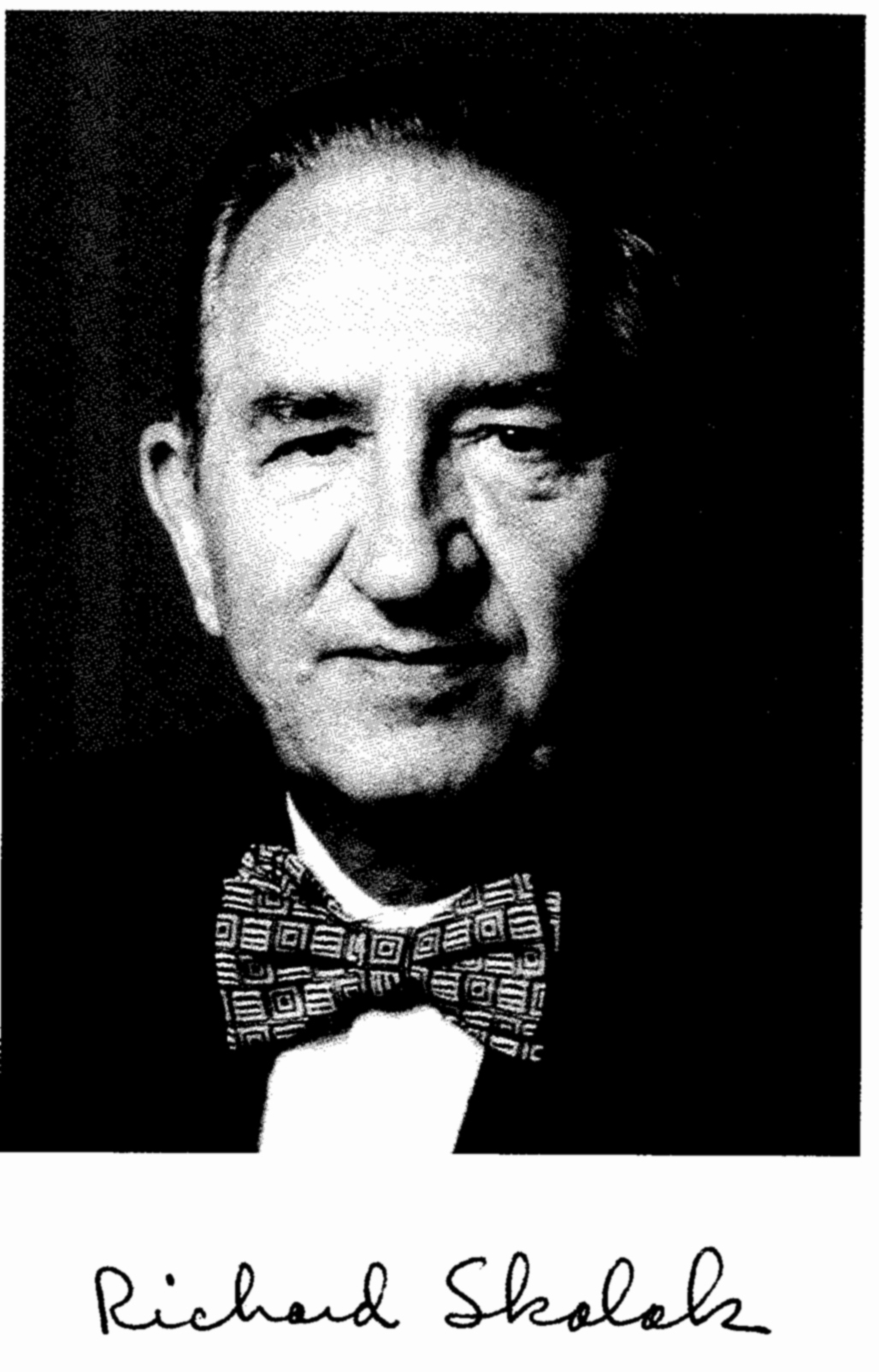Page 251
HENRY E. SINGLETON
1916-1999
BY GEORGE A. ROBERTS
HENRY EARL SINGLETON, pioneering cofounder of Teledyne, Inc., and chief executive of this Los Angeles-based conglomerate for three decades, died August 31, 1999, of brain cancer at his West Los Angeles home.
Henry was born on November 27, 1916, on a small farm at Haslet, Texas. He attended the U.S. Naval Academy beginning in 1935 and then matriculated at Massachusetts Institute of Technology, receiving his B.S. and M.S. degrees in electrical engineering in 1940. After working for the Office of Strategic Services in World War II, he returned to MIT to receive a doctorate in electrical engineering in 1950.
After a brief assignment as research associate at General Electric, Henry was recruited by Simon Ramo, acting as a agent for Howard Hughes, to join a team of engineers and scientists at Hughes Aircraft in Los Angeles to apply the most advanced technologies of the coming digital revolution to the electronic control system of the F-102. Henry had demonstrated an ability to design and apply computer technology to a variety of robotic applications at MIT and continued this work at Hughes, North American Aviation, and Litton Industries. In 1952 he led a group at North American Aviation working on inertial navigation systems. When Litton Industries was formed, Tex Thornton attracted Henry to pioneer Litton's work on the lightweight iner-
Page 252
tial navigation system still used by military and commercial aircraft worldwide. Henry became director of the engineering of the Electronics Equipments Division in 1957 and vice-president and general manager of the division in 1958. He holds several patents on gyro-stabilized and precision platforms, and accelerometers developed during this time period.
In 1960 he left Litton with George Kozmetsky to found Teledyne, Inc., dedicated to the application of digital technology to other technological fields, including helicopters, space science and exploration, mineral discovery and production, aircraft maintenance, water purification and treatment, medical and dental technologies, and manufacturing processes for electrical and mechanical power equipment. By starting a semiconductor company and acquiring other small companies, he expanded these businesses to 75 million in sales by 1965, then acquired interests in specialty metallurgical manufacturers and military and aircraft engine companies. By 1984 Teledyne was a major U.S. corporation with more than $3.5 billion of revenues from its manufacturing companies, and its specialty metals represented about one-third of its activities.
As chairman and chief executive officer, Henry kept a personal interest in the technical developments within the corporation and encouraged and guided employees and managers in their technical pursuits. He gave up the presidency in 1966 but continued as chairman and as a leader in innovative technical and financial management until his retirement in 1990.
His pioneering activities included adding a diverse group of financial institutions, giving Teledyne contact with, and intimacy with, the capital world. Thrift and loan banks were added by acquisition to units dealing with property, workers compensation, casualty, and life insurance. Henry pioneered a now-common practice of buying back one's own capital stock, reducing Teledyne's outstanding shares over a number of years by more than eighty percent. He also led the way to the practice of spinning off major parts of the corporation to the shareholders, beginning in 1986 with the workers compensation group, Argonaut, Inc, and in 1990 with a major part of the financially related businesses, Unitrin, Inc.
Page 253
During these years Henry had served as: director of Apple Computers; member of the corporation, MIT (1968 to 1973); trustee of California Institute of Technology (1968 to 1974); member of the U.S. Air Force Scientific Advisory Board (1959); and senior member of the Institute of Electrical and Electronics Engineers. He won the William Lowell Putnam Intercollegiate Mathematics Competition Award in 1939.
He was honored by the Outstanding Achievement Award in Business Management by the University of Southern California in 1972 and by establishment of the Singleton Research Fellowship at the City of Hope Pilot Medical Center in 1970.
His citation for membership in the National Academy of Engineering in 1979 reads, “For his contributions to lightweight inertial navigation systems and his leadership in the creation of a major technological corporation.”
After his retirement, Henry remained eager for new ventures. He bought extensive ranch lands in California and New Mexico and built herds of cattle. He loved these lands and took pride in managing them well. He studied Native American cultures and Western folklore. He played tournament chess, collected fine wines, and loved to hike and camp in the wilderness areas of California. Most recently, he devoted much time to computers, programming algorithms and creating a fine computer game of backgammon for, of course, Macintosh fans.
He is survived by his wife of fifty-seven years, Caroline, five children, and four grandchildren. A book about his love for the ranch San Cristobal in New Mexico and his efforts with local authorities and educational institutions to preserve its history and “petro-treasures” was written by a daughter. When it was my honor to speak at a service after his death, I spoke from knowledge and close friendship of this great engineer for over sixty-four years as I concluded, “Heaven has just gone digital.”





